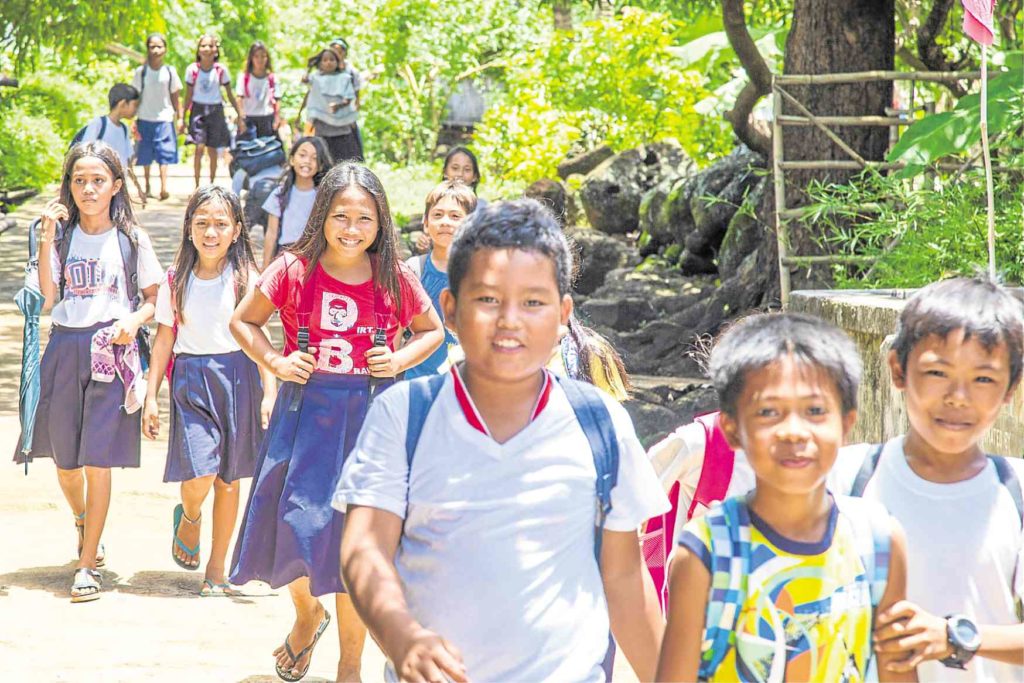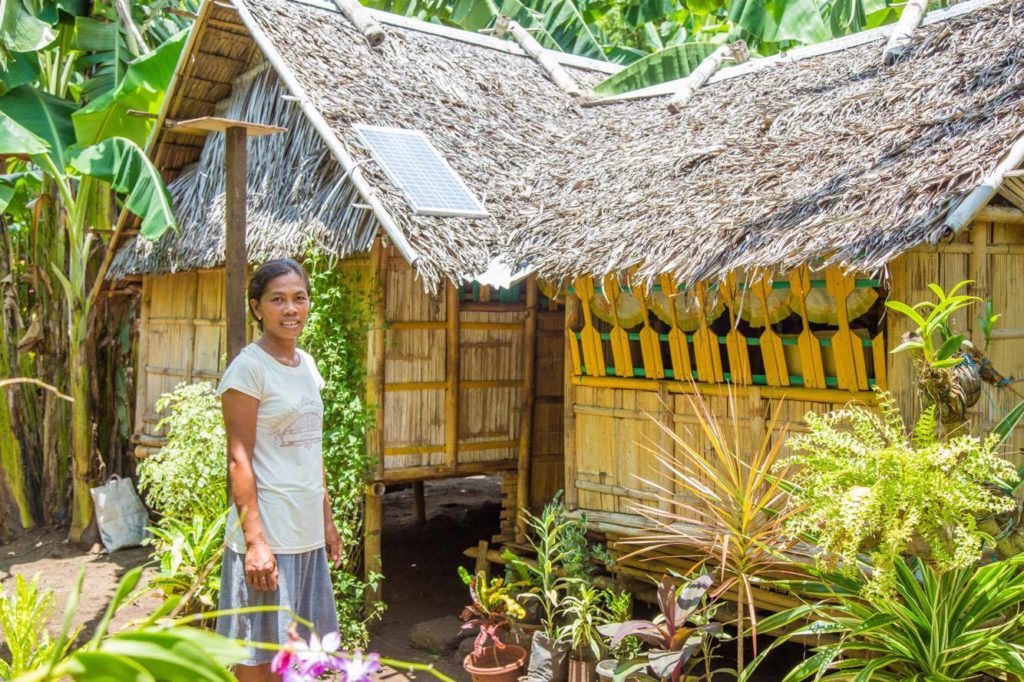Light comes to Amanpulo’s unknown neighbor

The school children of Diit stand to benefit from the solar power as they could now study in the evening. —Photo Courtesy of ASA Phils
DIIT, AGUTAYA, Palawan —After being “in the dark” most of their lives, 120 households in the island of Diit, a barangay of Agutaya town northeast of Palawan province, began enjoying power from the sun last August, thanks to the free solar power systems provided by microfinance foundation ASA Philippines.
The project is expected to energize and develop the fishing community of 1,212 residents of the remote island, according to Kamrul H. Tarafder, president of ASA Philippines Foundation, which has been operating in the country since 2004.
“We are giving light to the people who do not have light,” said Tarafder, a Bangladesh national, and one of the founders of ASA Philippines.
Diit, considered one of the 50 poorest barangays in the country, can be reached only after two days by boat from Manila (via Montenegro Lines). Alternatively, one can take a plane from Manila to Puerto Princesa. Then from Puerto Princesa City, one takes an overnight (or 16 hours) ferry boat ride to the island of Cuyo, transfers to another boat for a three-hour ride to the fifth class municipality of Agutaya and from there, takes another 30-minute pump boat ride to Diit.

Norle Zambrano shows the solar panel on top of her roof, part of the solar power system given to her by ASA Philippines. (Photo courtesy of Michael Fausto/ASA Philippines)
Vice President Leni Robredo, who visited Diit in 2016, said she could hardly find the island on the Philippine map.
On the other hand, the luxury resort island of Amanpulo, which is visited by the world’s richest celebrities, is just around one of these groups of islands in the Cuyo archipelago.
Cost-efficient
Solar power is the most cost-efficient source of electricity for the poor of Diit, according to ASA director for finance Barbara Custodio. Those in the area who can afford it use generators but the poor fisherfolk have no means to own one, she said.
The solar power system “basically transforms their lives by giving them the ability to be productive at night— they can study, work and do their household chores,” Custodio said.
The families of Diit are engaged in fishing, seaweed farming and buri hat making. With light from the sun stored in a lithium ion battery that comes with the control panel, the families are able to increase the number of hours for production.

Merlita Abejo, another recipient of the home solar system. (Photo courtesy of ASA Philippines)
The 30-watt system that can light three LED bulbs costs P9,000, if beneficiaries decide to purchase a set later on. The families used to spend an average of P700 to P800 a month for kerosene for their lamps, thus one to two years of savings could enable them to purchase a unit that would allow them to use other appliances, Tarafder explained.
A 50-watt unit that can power an electric fan costs P16,000, while a 100-watt unit that can power a television set costs P25,000.
On Sept. 16, Tarafder and ASA Philippines Foundation trustees Richard Dee and Eric Gotuaco turned over 120 units of the 30-watt solar power system to the poorest households that comprise a third of the community.
Norle Zambrano, 38, a seaweed planter, said she was glad and thankful for being chosen to receive a unit. It would help in the education of her children, she added.
“Yung dating madilim, naging maliwanag (what used to be dark became bright),” said vendor Maria Cristina Amorin. She said she could now charge her cell phone for free.
Aside from the 120 households, ASA Philippines engineers and technicians led by Israel B. Tulipas also installed last August the solar power systems at the barangay hall, the church, the barangay health center, a daycare center and the barangay tanod outpost.

The island of Diit in Agutaya, Palawan gets solar power. (Photo courtesy of Michael Fausto/ASA Philippines)
Maintenance
Deputy director Tulipas, coordinator of the solar project, said the beneficiaries were oriented on how to properly use and maintain the units. A local electrician was also trained so the beneficiaries can turn to him when a problem arises.
The batteries have a warranty of five years but Tarafder said the foundation would pull out the batteries if they don’t work anymore.
“We are giving one of the best batteries in the world,” he added. “In most cases, the battery would run for nine years. Once finished, we can give a new battery and pull out the old one for recycling.”
He claimed that this system, manufactured in Bangladesh, was one of the best in the region. The panel could last for over 20 years, he said.
ASA Philippines has not given the recipients conditions, except that they should take care of the systems. The battery cannot be overused, he said.
People are happy to receive something for free, but Tarafder said Filipinos were “a little bit more appreciative.”
Fund managers
ASA Philippines has provided assistance for the livelihood of close to 1.5 million Filipino borrowers as of August 31, 2017, according to the foundation’s website asaphil.org. The borrowers are in 24,701 barangays in 82 provinces. The foundation’s 2016 annual report shows the impact of these borrowings: 96 percent of the borrowers increased their incomes, while 95 percent have increased their savings and assets. At least 71 percent have sent their children to school. Thirteen percent of the enterprises created 279,917 jobs.
ASA Philippines gives out loans ranging from P6,000 to P10,000, depending on one’s capacity to pay, with a 15-percent service charge for six months. A borrower pays P50 a week per thousand pesos borrowed.
ASA Philippines attributes its high repayment rate of 99 percent to the foundation’s core values of respect for others, compassion for the less privileged, simplicity and transparency. Over 7,000 staff members assist its underprivileged clients.
“Everything we do comes from the generated income of microfinance,” Tarafder explained. “So we call it the poor helping themselves. We don’t receive grants from any sources. So we created a system where it’s the poor who give their trust and confidence to us and they’re just helping themselves. We are just the fund managers of the poor,” he said. —CONTRIBUTED

Recipients of the solar power system from the island barangay of Diit in Palawan pose behind ASA Philippines board members, directors and staff members as well as village officials. (Photo Courtesy of Michael Fausto/ASA Philippines)














